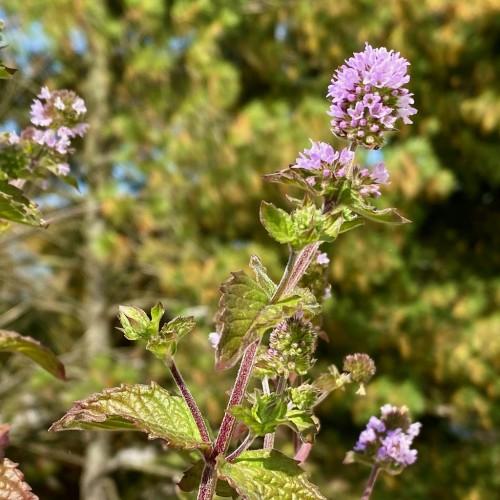
peppermint
Mentha x piperita
Cycle:
Perennial
Watering:
Average
Hardiness Zone:
7
Flowers:
Flowers In Spring
Sun:
Full sun, Part sun/part shade
Fruits:
Fruits In Summer Ready In Fall
Edible:
Yes
Leaf:
Yes
Growth Rate:
Low
Drought Tolerant:
Yes
Salt Tolerant:
Yes
Care Level:
Medium
watering
For Chinese parasol (Melliodendron xylocarpum), it needs to be watered moderately and regularly. During the spring and summer seasons when this plant is actively growing, it should be watered about 2-3 times a week, ensuring that the soil is evenly moist but not soggy. In the cooler months during the fall and winter, the watering schedule should be reduced to once a week, allowing the soil to dry out slightly between waterings. It is important to check the soil moisture levels before deciding when and how much to water.
sunlight
Chinese parasol (Melliodendron xylocarpum) typically grows best in full sun, although it can tolerate partial shade. For optimal growth, it should receive 6 to 8 hours of direct sunlight per day. In areas with especially hot summers, some morning or late afternoon shade may be beneficial.
pruning
The Chinese parasol (Melliodendron xylocarpum) should be pruned in late winter or early spring. Pruning should be done sparingly and should only be done if absolutely necessary as the tree is developed with an open canopy and has a naturally attractive shape. Removing any dead, diseased, or damaged branches is the best way to start. If too much pruning is done, no new growth will be encouraged and the canopy will not be as full and attractive. Regular light pruning to remove crossing branches or any branches that appear diseased can be done to maintain the shape and beauty of the tree.
Propagation
Season
Hardiness Map
FAQ
Is peppermint herb green good for digestion?
Peppermint herb is indeed beneficial for digestion. The flavonoids in the herb support digestion by reducing inflammation in the digestive track, aiding in digestion and relieving indigestion, heartburn, and even the symptoms of irritable bowel syndrome. Additionally, peppermint is naturally rich in menthol, which helps to relax the muscles of the stomach, aiding in the digestion of food. Peppermint herb can be consumed in a variety of forms, such as teas, tinctures and capsules, as well as by adding the herb to food or directly to water or tea.
Should peppermint herb green be consumed daily?
No, peppermint herb green should not be consumed daily. This is because it contains high levels of menthol, which can be toxic if taken in large doses. Additionally, consuming large amounts of peppermint herb green could interfere with the absorption of essential minerals and vitamins, potentially causing vitamin deficiencies. For these reasons, it is best to consult with a doctor before incorporating peppermint herb green into your daily diet.
